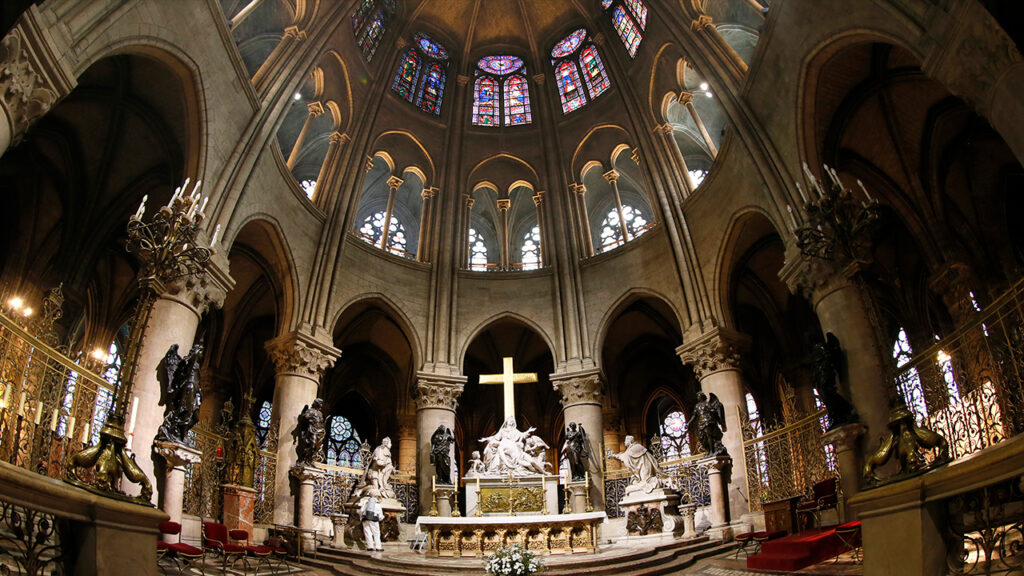Like most in the Evangelical Intelligentsia, Albert Mohler is signaling a virtue that is almost altogether disconnected from his theology. The long, long line to mourn the loss of a Temple of Idols forms somewhere near the headquarters of The Social Gospel Coalition, who lean heavily upon Roman Catholic Liberation Theology to support their progressive political agenda.
Mohler wrote an article entitled History Burning Before Our Eyes in which he laments the loss of so much ‘history.’ The history of Roman Catholicism has been the death of hundreds of thousands of Protestants, abject tyranny, responsibility for the Dark Ages, and the propagation of superstitious anti-Christ religion around the world.
What Mohler fails to grasp is that history for the sake of history is not in and of itself beautiful. You will not find monuments or museums dedicated to the Third Reich (a history that intersects with that of the Roman Catholic Church more than most would like to admit), because we don’t value the display of Nazi uniforms. We consider some history offensive and sweep it into the ash-bin of history, after taking careful notes to avoid mistakes of the past.
Our theology, as Protestants, finds Roman Catholicism appallingly evil. Our historic confessions virtually all call the Pope the Anti-Christ. I would care about the burning of Notre Dame the same as I care about the burning of Ba’al’s temple or a burn-pyre of Asherah poles.
But, the intellectuals argue, it has beautiful architecture. It’s a feat of human engineering. Its architecture is beautiful.
However, I would submit to you that Notre Dame likely did not compare to the Tower of Babel, the height of which was presumed that man could scale Heaven, and yet God knocked that monument to man’s hubris down brick-by-brick.
We expect intellectual namby-pambies to wail and hand-wring over the loss of so much “culture,” but what we don’t expect – and shouldn’t expect – is a line like this coming from Albert Mohler…
Indeed, the Protestant Reformers themselves would have mourned the loss of this great cathedral—a symbol of the Christianity they sought to reform.
Uh…no. No, no, no, no, no.
That is asinine. It is historically untenable. It is revisionist garbage.
This is not astute from Dr. Mohler. This is appalling, factually invalid, and historically untrue.
Would the Protestant Reformers lament the loss of a Roman Catholic cathedral? Let’s check.
John Calvin, who was a Frenchman himself, grew up in the same idol-drenched nation over which Notre Dame cast its atrocious shadow. He clarifies exactly where he stands on the decor of the Notre Dame and the most impressively-hewn graven images in The Institutes of the Christian Religion Book 1, Chapter 11.
The Reformer writes of Roman Catholic icons and idols and the same ornation as present in Notre Dame:
I come now to monstrous impieties, which it is strange they ventured to utter, and twice strange that all men did not protest against with the utmost detestation. It is right to expose this frantic and flagitious extravagance, and thereby deprive the worship of images of that gloss of antiquity in which Papists seek to deck it (Institutes 1:11.16).
Click the link above and read Calvin’s words for yourself. He had zero respect for the idols, icons, imagery, and ornation lamented as lost by Albert Mohler. For Calvin, these things amounted to ‘monstrous impieties.’
Rather, Calvin believed the Pope to be an anti-christ or devil (he used both words to refer to the Bishop of Rome), Romanist cathedrals to be full of idols, Roman Catholics to be idolaters, and Roman Catholicism to be a false religion.

If transported in time, Calvin would have been shocked to have seen one of the devil’s castles in ashes and then find Reformed Protestants mumbling about how beautiful it used to be.
When I was 17, I won a trip to Washington D.C. via a speech contest with the rural electric cooperative. I stood in the National Cathedral with friends I made on that weeklong excursion…Aaron Weis, Amanda Jo Brawley, and Nathan Bullock, as I recall.
As we got the tour of the cathedral, the tour-guide explained that all religions were free to use the facility for the worship of their god, whoever that god may be. As my friends were taken aback at how beautiful it was, I sat coldly.
Aaron asked, “Isn’t this awesome?”
“No,” I said.
“Really? Why?” he questioned.
My response was, “I’m pretty sure God hates it.”
Finding beauty in that which God detests is not the mark of an intellectual. It’s the mark of a fool.










